Late winter, before the first spring growth, is the best time to trim most trees and prune shrubs. Wounds are only exposed a short time before new growth begins accelerating the healing process. There’s another practical reason for tree trimming in late winter. Bare branches give the arborist a better view of the tree’s structure, allowing for more accurate pruning decisions.
Speaking of arborists, Nashville’s leading landscaping service and tree service, the Parke Company, is a member of the International Society of Arboriculture (ISA) and is staffed with ISA Certified Arborists. Trimming mature trees should be left to the professionals. Inaccurate trimming, particularly to the crown, can cause serious damage or even the loss of a mature tree.
What to Know About Tree Trimming
Tree Trimming Basics
Tree pruning isn’t done just to improve aesthetics. It can be a lot more complicated than that, and that’s why you want a professional doing it. The health of the tree, the health of the lawn beneath the tree, and the tree’s interference with structures or risk of wind damage all play a role in making tree trimming decisions.
On mature trees, the crown receives most of the pruning attention. Focus is placed on the extremities of the crown to keep a shape unique to the species. Trimming in close to the stem is usually done only to remove dead or dying limbs, or to allow more light to penetrate the crown and reach the grass at the base of the tree.
Limbs are also pruned back to avoid contact with structures or power lines. Prudent tree trimming significantly reduces wind resistance, lowering the risk of storm damage.
Common Types of Pruning
- Crown Thinning. On young trees, this is the selective removal of branches throughout the crown. It promotes good health by letting light get to interior branches, providing good air movement, and removing weak branches.
- Crown Raising. This is usually done on mature trees. Lower branches are pruned to “raise” the crown above turf, sidewalks, or streets.
- Crown Reduction. When done properly, crown reduction is not crown “topping,” which should be avoided if possible. Crown reduction involves removing branches that are immediately above lateral branches, leaving no stub. This reduces the height of the tree without the hazards associated with “topping.” When a tree is topped (basically cutting off the top branches and stem) it exposes the tree to sun damage and insect infestation. It also causes a myriad of small and weak branches to grow, which have the potential to break or snap off, causing damage below.
A tree trimmer has to understand the “anatomy” of the tree being trimmed to avoid causing it serious harm. Only entrust a certified arborist to perform this task on your trees.
As we said earlier, now is a great time to prune your trees, and we invite you to call the Parke Company to arrange an inspection of your property. Give us a call today and we will have an ISA certified arborist visit and prepare an affordable estimate to take care of your “forest,” even if it’s a single tree.
